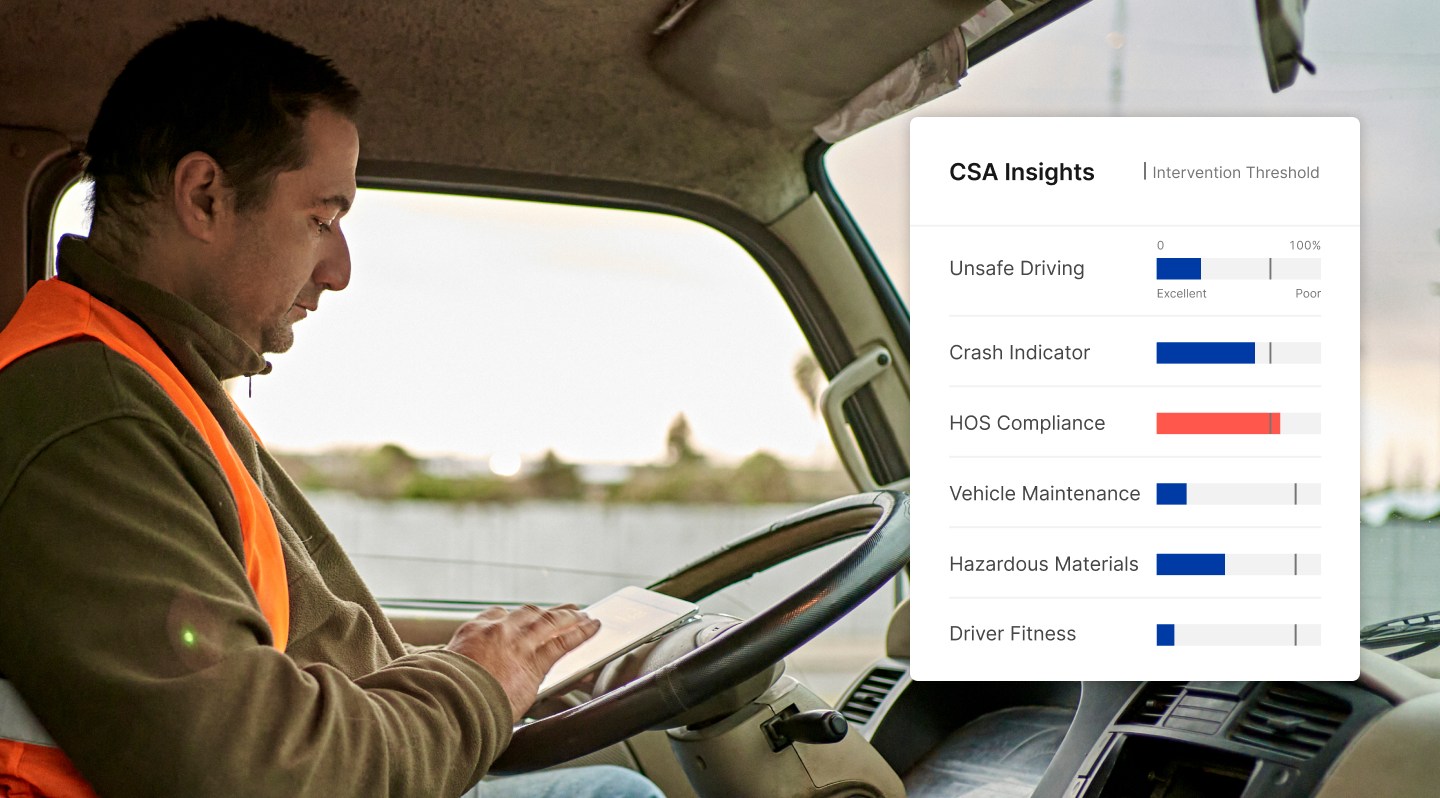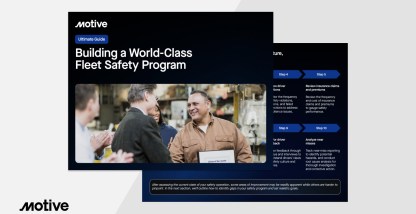- The CSA program offers a comprehensive picture of a motor carrier’s safety record.
- Final CSA scores aren’t accessible to the public but performance data is. Adverse data can hamper business growth.
- A CSA score can be a tool for retention and profitability.
What is a CSA score for drivers?
The Compliance, Safety, Accountability (CSA) program was designed to improve safety conditions for carriers and the general public. Through diligent record-keeping of safety metrics provided by the FMCSA, a motor carrier’s CSA score represents their overall safety performance.
CSA scores do matter. But you don’t have to view them as a burden to your fleet. Your CSA score can be your biggest advocate if approached with the right mindset.
Understanding how to check your CSA score, how it’s compiled, and how to change it. These are the major steps toward thriving in the industry. Though opinions vary on how efficient these steps really are, ignoring driver scores is a risk no motor carrier can afford to take. Let’s look at the how and why behind the CSA program.
See how Motive can help protect your drivers and your bottom line. Get a tour to see it in action.
The BASICs behind the CSA FMCSA program
The CSA FMCSA program officially launched in November 2010. Its goal was to enforce the FMCSA’s compliance program and promote safety from the highest industry position.
The CSA program had its detractors since the beginning. For example, some questioned the CSA program’s effectiveness. There was no means for distinguishing collisions caused by other drivers from those caused by the commercial vehicle driver.
It was clear to many, though, that a safety scoring program would benefit the industry. The program’s core metrics are the BASIC (Behavior Analysis and Safety Improvement Categories) scores.
Seven different safety behaviors are recorded and ranked nationally. These behaviors can range from Hours of Service compliance to Controlled Substances/Alcohol violations. Your CSA score report is an indication of your BASIC percentiles in comparison to industry averages.
CSA score warning letters and red flags
The CSA will send out warning letters when BASIC scores approach problematic levels. Safety performance data is updated monthly through the FMCSA’s Safety Management System (SMS).
It’s important to note that warning letters don’t require a direct response. They’re not direct violations. Rather, they’re a way for the CSA to encourage safety improvement before something worse occurs.
Though there are exceptions based on truck volume and length of time in business. Research shows a carrier with more Alert Status BASIC scores are more likely to be involved in motor collisions.
Violations are removed from the carrier’s record after two years. One proactive safety strategy for carriers is to track which violations are most common, and which are on the rise.
How do I check my CSA score?
You can access your CSA score by registering for a PIN with your USDOT or MC number. It’s important to note that your composite CSA report isn’t public information. Individual BASIC scores, however, are accessible with a basic DOT number search.
The public nature of certain BASIC stats through the CSA website, as well as avenues like Carrier 411 and SaferSYS, make safety a top issue for every carrier.
CSA scores are a window into business health
CSA scores can often be the swing factor for potential clients looking to do business. Although CSA scores aren’t a complete picture of a motor carrier’s business activity or practices, they offer a snapshot into how each carrier approaches behind-the-wheel operations.
What’s a good CSA score?
CSA scores for drivers are ranked on a 0 to 100 scale, with higher numbers being worse. Companies with higher CSA scores could be flagged for compliance review or issued out-of-service orders if corrective measures aren’t taken. Ignoring these scores can lead to much larger problems, and quickly. Consult this post to learn more about what constitutes a good CSA score.
Can I improve my score?
Each company must decide whether to be proactive or reactive when it comes to safety and compliance. Even the CSA program is implementing innovations like searching for specific drivers’ Drug and Alcohol violations. So companies can be more informed in hiring practices. A high score isn’t the kind of problem that gets better by waiting it out.
6 tips for succeeding in safety and improving your CSA score
In reality, without the tools to recognize the patterns that lead to a CSA score, many companies can end up feeling hamstrung by it. Familiarize yourself with CSA points and how they may affect your score. You can find a CSA points chart in this FMCSA document, beginning on page 49.
You can take steps to lower your CSA score or ensure it stays low. Many tools can help you take ownership and control of internal safety practices.
- Start with a pre-trip inspection of every vehicle, every time. Broken lights account for a large number of roadside violations. And the hit to your CSA score is significant.
- Check the tires and brakes, as well as other parts of the vehicle that are known to be in violation more often than others.
- Implement a system of checks and balances by leveraging fleet safety and coaching solutions to promote a culture of safety.
- Advancements in driver workflow may help you keep a close eye on driver fitness while curbing the risk of exhausted driving.
- The risk of Hours of Service violations may be drastically mitigated by an ELD solution. Learn more about ELDs and how they may help.
- Don’t forget that if you do receive a violation that raises your fleet’s CSA score, you have two years to challenge it.
CSA scores aren’t going anywhere. Use your fleet’s CSA score health as a barometer to measure your fleet’s safety culture on an ongoing basis.
Moving from a reactive to a proactive point of view means taking ownership of preventable liabilities.
By equipping your fleet with the tools to drive safely, you can maintain a positive CSA score. You can also show internal employees and prospective clients that safety and profitability work hand in hand.
Improve CSA scores with Motive
Learn more about CSA scores or request a free demo of the Motive fleet management software to see how we can help you improve your scores.










